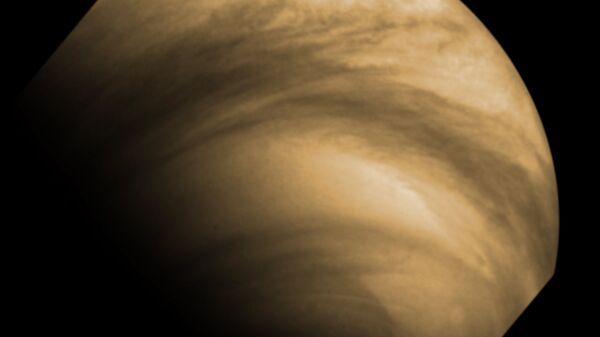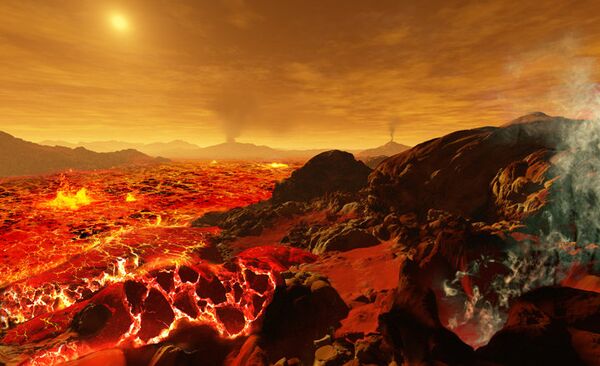The spacecraft Akatsuki (Japanese for "Dawn") observed the atmospheric gravity wave in December 2015. Unlike previously-detected Venusian atmospheric gravity waves, this appeared to be in a stationary position above a large mountain range. Researchers believe the atmospheric gravity wave formed due to atmospheric disruption caused by the mountains.
A gravity wave is generated when gas or fluids are disrupted, either by gravity or buoyancy, before returning to equilibrium. Commonly-seen gravity waves include the tide at the beach or long, thin wave clouds in the sky.
Atmospheric gravity waves work under the same principle, and are caused by the transfer of momentum between layers of the atmosphere. Earth sees them frequently due to having a layered atmosphere with complex interactions between the levels, a primary cause of turbulence.
Venus's atmosphere was thought to have less differentiation than Earth. The massive atmospheric gravity wave observed by Akatsuki, however, suggests otherwise.
Akatsuki advances the work of the European Space Agency's (ESO) Venus Express mission, which ended in 2014. The ESO mission discovered that air heavy with water vapor rises up through Venus's sulfur-based atmosphere (air is lighter than sulfur) causing gravity waves to occur. This has been recorded several times, but nobody is certain of the cause.
The atmospheric gravity wave tells astronomers what they do not know, rather than proving what they do know. For instance, such a phenomenon should be virtually impossible, based on what is known about the planet's surface weather. In addition Akatsuki has yet to answer the primary question it was sent to investigate: what is the cause of the high-speed winds on Venus's surface?
Gravity waves are not to be confused with similarly-named "gravitational" waves. While the former are caused by gravity, the latter are ripples in the curvature of spacetime caused by massive releases of energy.



